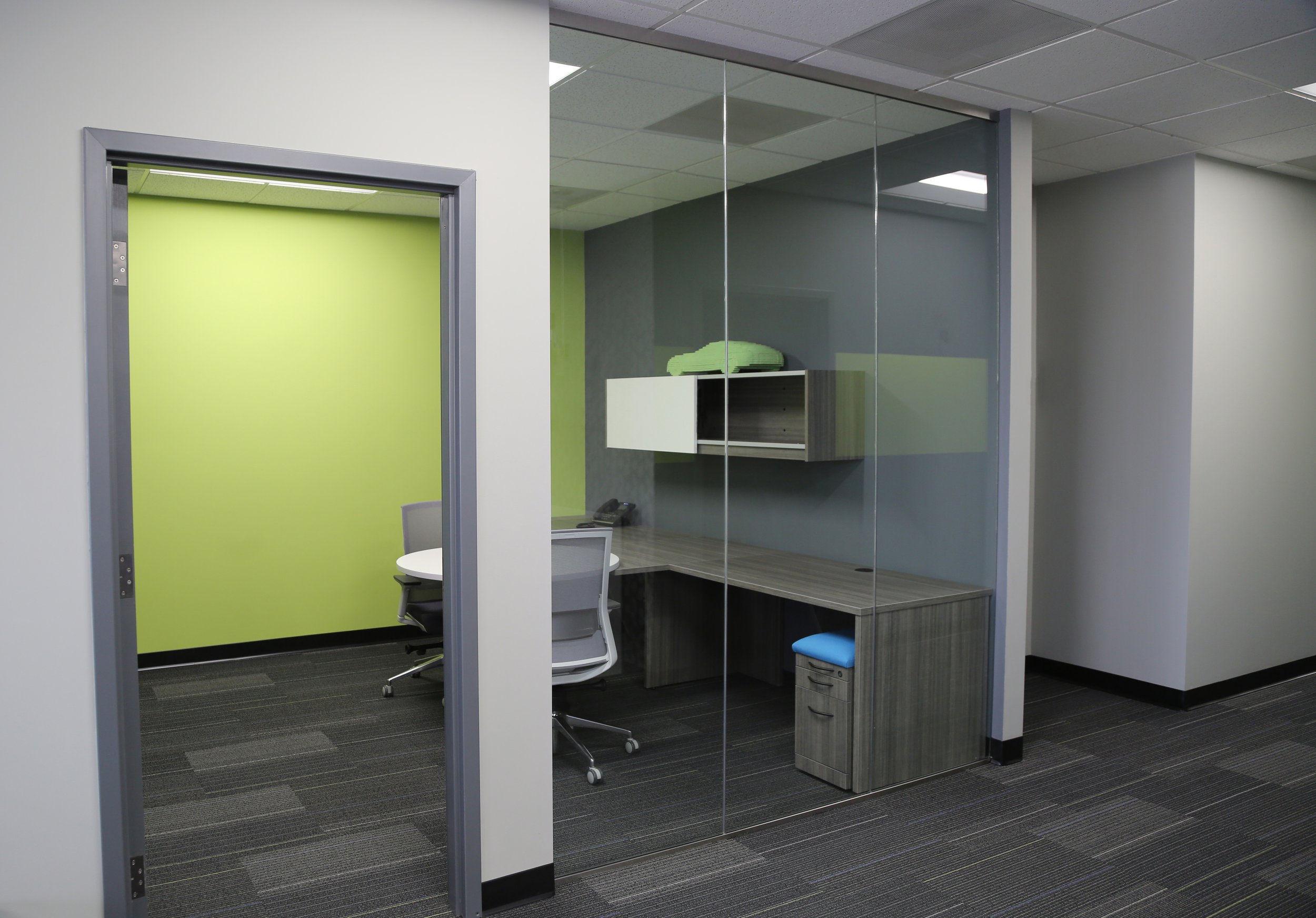Incorporate Healthcare Design Practices into Your Office
Interior designers can play a pivotal role in helping businesses return to work safely. As companies prepare to reopen and adapt to new health standards, the design strategies commonly found in healthcare facilities offer valuable lessons. Why healthcare? Because healthcare environments have long followed strict guidelines on safe and healthy spaces, making them ideal models for infection control practices in the workplace. With collaboration between business owners and designers, infection prevention can be tailored to suit the unique needs of each business.
This blog will explore how incorporating healthcare design practices into the office can prioritize employee safety, improve cleanliness, and create a more resilient workspace.
Why Healthcare Design?
Healthcare facilities have evolved, incorporating innovations in material science and layout to ensure safety without sacrificing functionality. These principles can easily translate into the corporate world, where clean, healthy spaces are more important than ever.
Whether it’s a corporate office, cultural arts facility, or retail store, the need to rethink design and materials is now essential for any space where medium to large groups of people gather.
Immediate Steps for the Office
As businesses plan to return to the office, the first steps often involve more frequent cleaning and the availability of touchless hand sanitizers. However, adopting healthcare design practices offers more comprehensive solutions.
Social Distancing Layouts: Workstations can be spaced apart to maintain a minimum distance of six feet, with wider aisles and staggered staffing shifts to reduce the number of people in the office at once.
Cleanability of Materials: A key focus will be on using materials that are easy to clean and sanitize. Reducing surface touch points through touchless technology will also play a significant role in keeping the office environment safe.
The Science Behind Health-Conscious Materials
The materials used in healthcare spaces are engineered to minimize the harboring of microbes and bacteria. These innovations are now making their way into corporate offices, helping to create environments that are both hygienic and visually appealing. For example:
Antimicrobial Upholstery: Anti-bacterial fabrics, which were once mainly found in areas like break rooms, will become standard in workstations, collaborative spaces, and meeting rooms. These materials help prevent the spread of germs through porous surfaces.
Non-Porous, Cleanable Surfaces: Solid surfaces, quartz, plexiglass, plastics, and specialty laminates are ideal for minimizing the harboring of microbes. By incorporating these materials, offices can reduce the risk of germs settling into hard-to-clean areas, making hygiene an easier task.
Air Quality: The Hidden Element
Even with separate office spaces for individuals, shared air systems can be a concern for businesses looking to reduce airborne contamination. Air filtration is an important factor in improving indoor air quality, and businesses can take steps to minimize airborne particles with the right filters.
According to Filtrete, a leader in air filtration technology, particles 0.5 microns or smaller can stay airborne for up to 41 hours. While air filters may not prevent the spread of viruses like COVID-19, they can significantly improve air quality by capturing microscopic particles. An electrostatic filter with an MPR rating of 1500 or above is recommended for offices, as these filters are more effective at capturing airborne particles without straining the HVAC system.
Think of this as your office wearing a mask. While it may not eliminate all risks, it adds an extra layer of protection, ensuring cleaner air and helping prevent the spread of germs from one office space to another.
Healthcare Design Principles for the Modern Office
Incorporating healthcare design standards into your office can enhance safety and cleanliness while maintaining a professional and functional environment. Here are key elements to consider:
Bleach-Cleanable and Antimicrobial Fabrics: Polyester, vinyl composites, acrylics, and silicone are all materials that can be sanitized easily while also providing durability and comfort.
Non-Porous, Easy-to-Clean Surfaces: Using solid surfaces, quartz, glass, specialty laminates, plexiglass, and plastics helps create a workspace where bacteria and viruses are less likely to thrive.
Sanitizing Stations: Incorporating sanitizing stations within individual workspaces ensures employees have constant access to hygiene resources.
Touchless Technology: Wherever possible, touchless features—such as faucets, toilets, entryways, elevator controls, and hand sanitizers—should be installed to minimize the need for physical contact. Many of these features can now be controlled via smartphone apps, and in some cases, experts are even suggesting the removal of conference-room doors as an anti-germ measure.
Air Filtration: Improve air filtration to ensure a healthier flow of air from space to space.
Looking Ahead
As we move forward, it’s important to recognize that office design directly impacts not only the experience of employees but also their health and safety. By incorporating healthcare design practices, businesses can provide a safer, more comfortable environment where employees feel valued and protected.
Your business may look different in the coming years, but innovation and flexibility will ensure that your workspace remains functional and resilient. Let your design team help you create a strategy that meets the evolving demands of today’s world and lessens the overwhelming challenges ahead.
By prioritizing health-conscious design, you can prepare your office for the future while promoting a culture of safety, cleanliness, and well-being.




